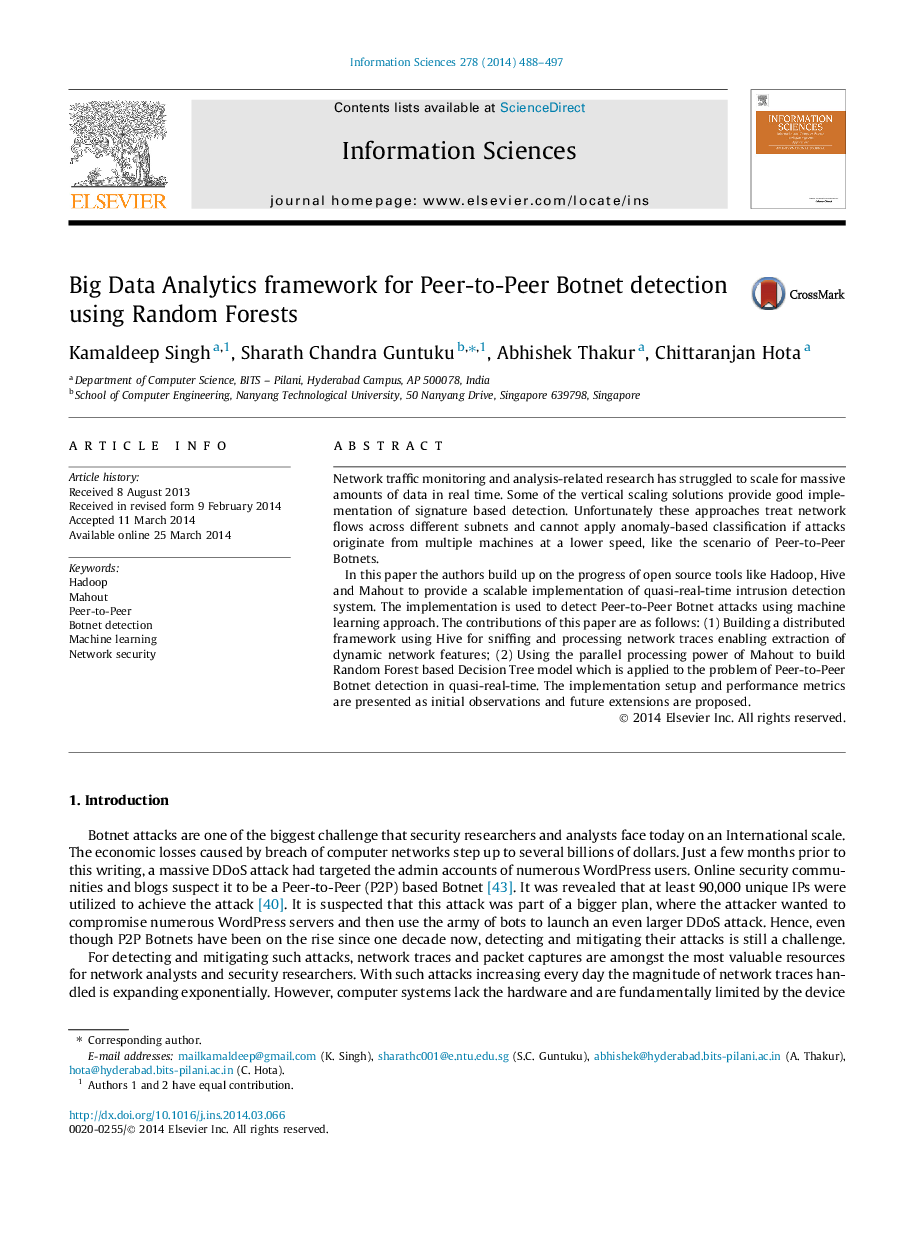| Article ID | Journal | Published Year | Pages | File Type |
|---|---|---|---|---|
| 393679 | Information Sciences | 2014 | 10 Pages |
•Developed a test-bed for real-time P2P Botnet detection.•Built scalable implementation of quasi-real-time intrusion detection system.•Used Big Data Analytics framework of Hadoop.•Solution acts as a pre-processing engine for existing IDS/IPS.
Network traffic monitoring and analysis-related research has struggled to scale for massive amounts of data in real time. Some of the vertical scaling solutions provide good implementation of signature based detection. Unfortunately these approaches treat network flows across different subnets and cannot apply anomaly-based classification if attacks originate from multiple machines at a lower speed, like the scenario of Peer-to-Peer Botnets.In this paper the authors build up on the progress of open source tools like Hadoop, Hive and Mahout to provide a scalable implementation of quasi-real-time intrusion detection system. The implementation is used to detect Peer-to-Peer Botnet attacks using machine learning approach. The contributions of this paper are as follows: (1) Building a distributed framework using Hive for sniffing and processing network traces enabling extraction of dynamic network features; (2) Using the parallel processing power of Mahout to build Random Forest based Decision Tree model which is applied to the problem of Peer-to-Peer Botnet detection in quasi-real-time. The implementation setup and performance metrics are presented as initial observations and future extensions are proposed.
